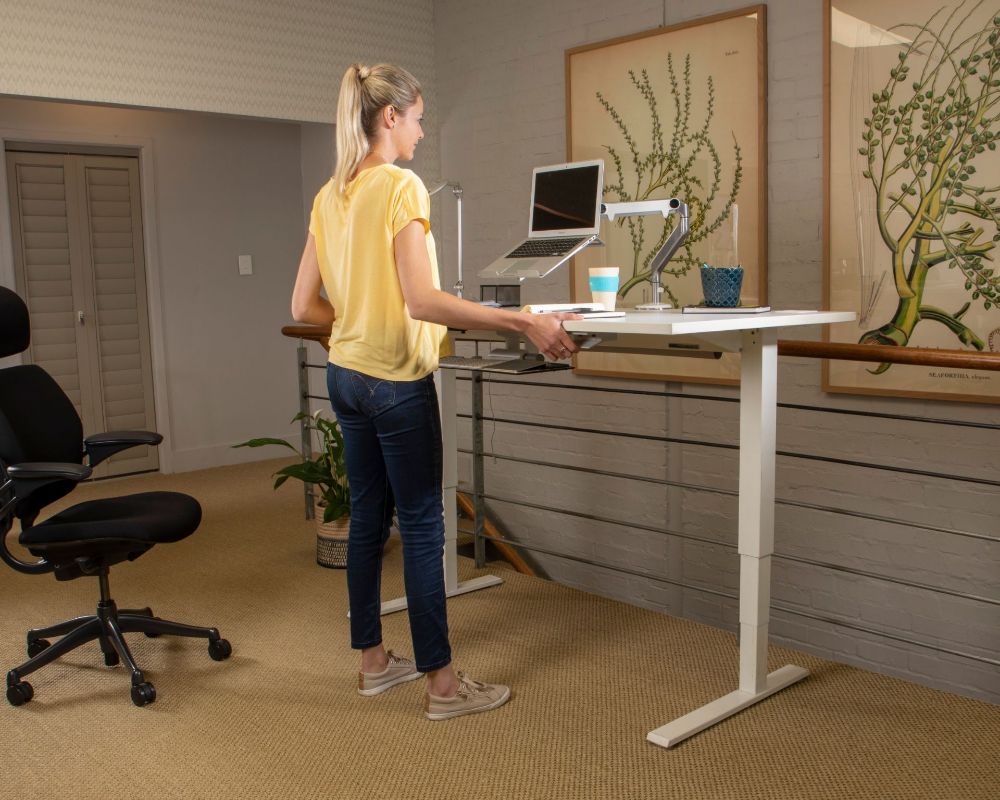Sit/stand and debunking common misconceptions
While incorporating sit-stand practices into your work routine can have a positive impact on your overall health, posture and productivity, it's essential to listen to your body and adjust your workstation ergonomics accordingly. Speak to a healthcare specialist if you have any specific concerns or pre-existing conditions.
The key when transitioning to sit/stand is to do it gradually, as sudden or prolonged changes could lead to discomfort or fatigue. Find a balance that works for you, starting with standing for 5 minutes out of every hour and building up to 15 minutes or ultimately longer. We suggest tuning in to how you’re feeling and making sure you don’t get misled by these common misconceptions:



1. Standing all day is better than sitting all day:
As anyone who stands all day will tell you, this is simply not true. Sitting for long periods can have negative health effects, but so can standing all day, leading to discomfort, fatigue and musculoskeletal issues. You need to find a balance between sitting and standing, incorporate regular movement and posture changes throughout the day.
2. Standing burns way more calories than sitting:
If only. While standing does burn more calories than sitting, the difference is not significant. The increase in calories expended while standing alone is pretty insubstantial and certainly isn’t a substitute for proper exercise. Sit-stand workstations are tools for promoting movement and reducing sedentary behaviour. Don’t view them as a weight loss strategy.
3. Sit-stand workstations are all you need ergonomically speaking:
Nope. Ergonomic principles remain crucial even with a sit-stand workstation. Proper desk and chair height, screen placement and keyboard and mouse positioning cannot be ignored if you’re wanting to optimise comfort and productivity. And simply standing without paying attention to ergonomics can lead to its own raft of issues, including foot, leg and back discomfort.
4. Standing is always more comfortable than sitting:
For some people maybe. But not for others, who may experience discomfort in their legs, feet and lower back when standing for extended periods. Listen to your body and switch between sitting and standing to find the balance that suits you best.
5. Sit-stand workstations guarantee improved productivity:
If this were true, then no company could resist investing in sit/stand desks for their entire staff. Sadly, productivity can be influenced by innumerable factors, including individual work preferences and tasks. But sit/stand desks do improve productivity for many people, so why not experiment with different working positions, observe how each affects your focus and decide what combination boosts productivity most successfully for you?
